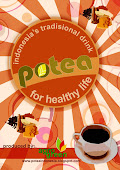
DOWNLOD LINK:
http://www.4shared.com/file/259586832/a98d25d8/Organic_carbon_dynamics_in_man.html
Abstract
Our current knowledge on production, composition, transport, pathways and transformations of organic carbon in tropical ![]() mangrove
mangrove![]() environments is reviewed and discussed. Organic carbon entering
environments is reviewed and discussed. Organic carbon entering ![]() mangrove
mangrove![]() foodwebs is either produced autochthonously or imported by tides and/or rivers.
foodwebs is either produced autochthonously or imported by tides and/or rivers. ![]() Mangrove
Mangrove![]() litter and benthic microalgae are usually the most important autochthonous carbon sources. Depending on local conditions, phytoplankton and seagrass detritus imported with tides may represent a significant supplementary carbon input. Litter handling by the fauna not only affects microbial carbon transformations, but also the amount of organic carbon available for export. Most
litter and benthic microalgae are usually the most important autochthonous carbon sources. Depending on local conditions, phytoplankton and seagrass detritus imported with tides may represent a significant supplementary carbon input. Litter handling by the fauna not only affects microbial carbon transformations, but also the amount of organic carbon available for export. Most ![]() mangrove
mangrove![]() detritus that enters the sediment is degraded by microorganisms. Aerobic respiration and anaerobic sulfate reduction are usually considered the most important microbial respiration processes, but recent evidence suggests that iron respiration may be important in
detritus that enters the sediment is degraded by microorganisms. Aerobic respiration and anaerobic sulfate reduction are usually considered the most important microbial respiration processes, but recent evidence suggests that iron respiration may be important in ![]() mangrove
mangrove![]() sediments as well. Organic carbon that escapes microbial degradation is stored in sediments and in some
sediments as well. Organic carbon that escapes microbial degradation is stored in sediments and in some ![]() mangrove
mangrove![]() ecosystems, organic-rich sediments may extend to several meters depth. Many
ecosystems, organic-rich sediments may extend to several meters depth. Many ![]() mangrove
mangrove![]() forests also lose a significant fraction of their net primary production to coastal waters. Large differences occur between
forests also lose a significant fraction of their net primary production to coastal waters. Large differences occur between ![]() mangrove
mangrove![]() forests with respect to litter production and export.
forests with respect to litter production and export. ![]() Mangrove
Mangrove![]() -derived DOC is also released into the water column and can add to the total organic carbon export. Numerous compounds have been characterized from
-derived DOC is also released into the water column and can add to the total organic carbon export. Numerous compounds have been characterized from ![]() mangrove
mangrove![]() tissues, including carbohydrates, amino acids, lignin-derived phenols, tannins, fatty acids, triterpenoids and n-alkanes. Many of these may, together with stable isotopes, exhibit a strong source signature and are potentially useful tracers of
tissues, including carbohydrates, amino acids, lignin-derived phenols, tannins, fatty acids, triterpenoids and n-alkanes. Many of these may, together with stable isotopes, exhibit a strong source signature and are potentially useful tracers of ![]() mangrove
mangrove![]() -derived organic matter. Our knowledge on
-derived organic matter. Our knowledge on ![]() mangrove
mangrove![]() carbon dynamics has improved considerably in recent years, but there are still significant gaps and shortcomings. These are emphasized and relevant research directions are suggested.
carbon dynamics has improved considerably in recent years, but there are still significant gaps and shortcomings. These are emphasized and relevant research directions are suggested.
Keywords: ![]() Mangrove
Mangrove![]() forest; Carbon dynamics; Import; Export; Biogeochemistry; Burial
forest; Carbon dynamics; Import; Export; Biogeochemistry; Burial



0 komentar:
Posting Komentar